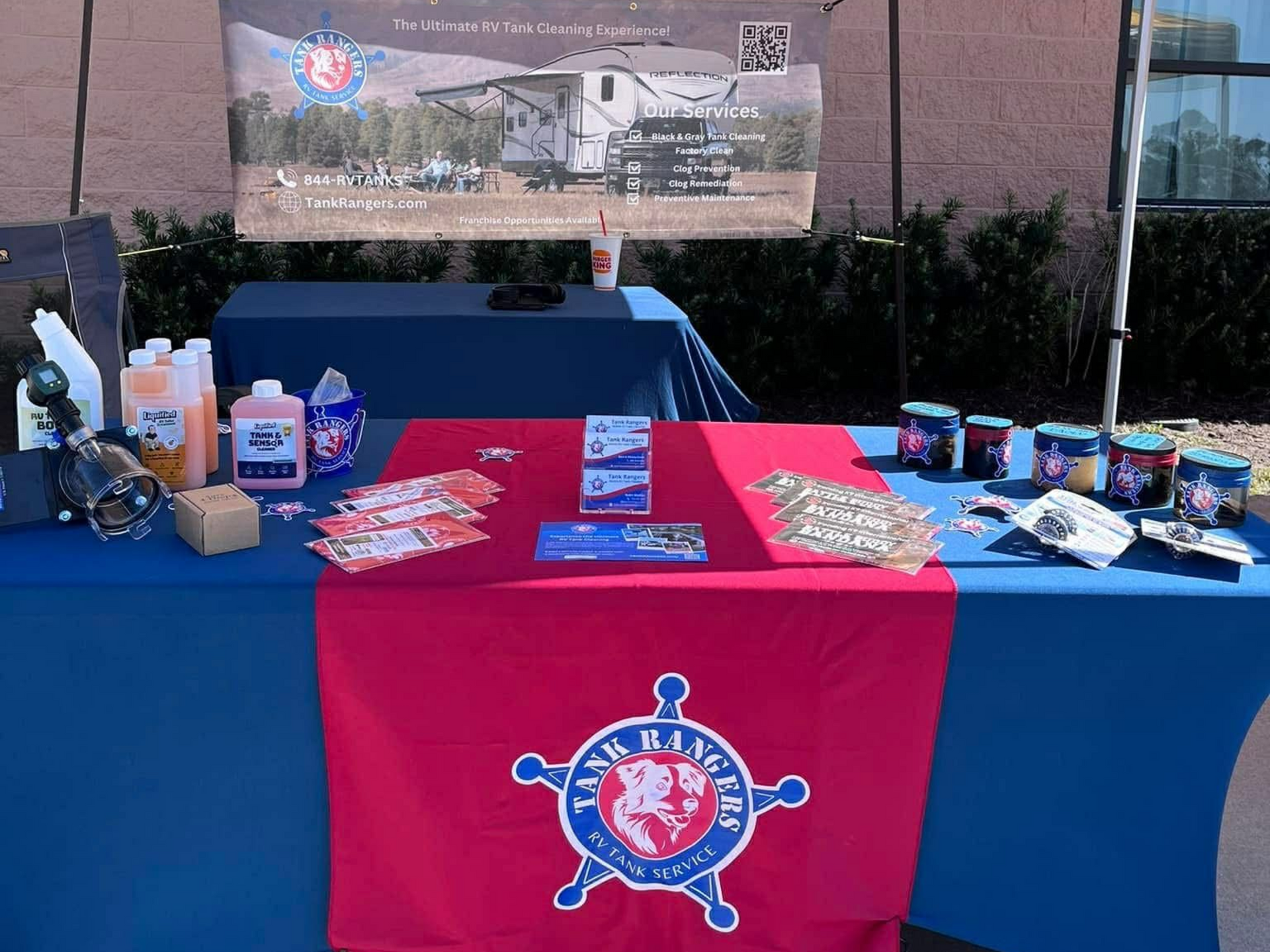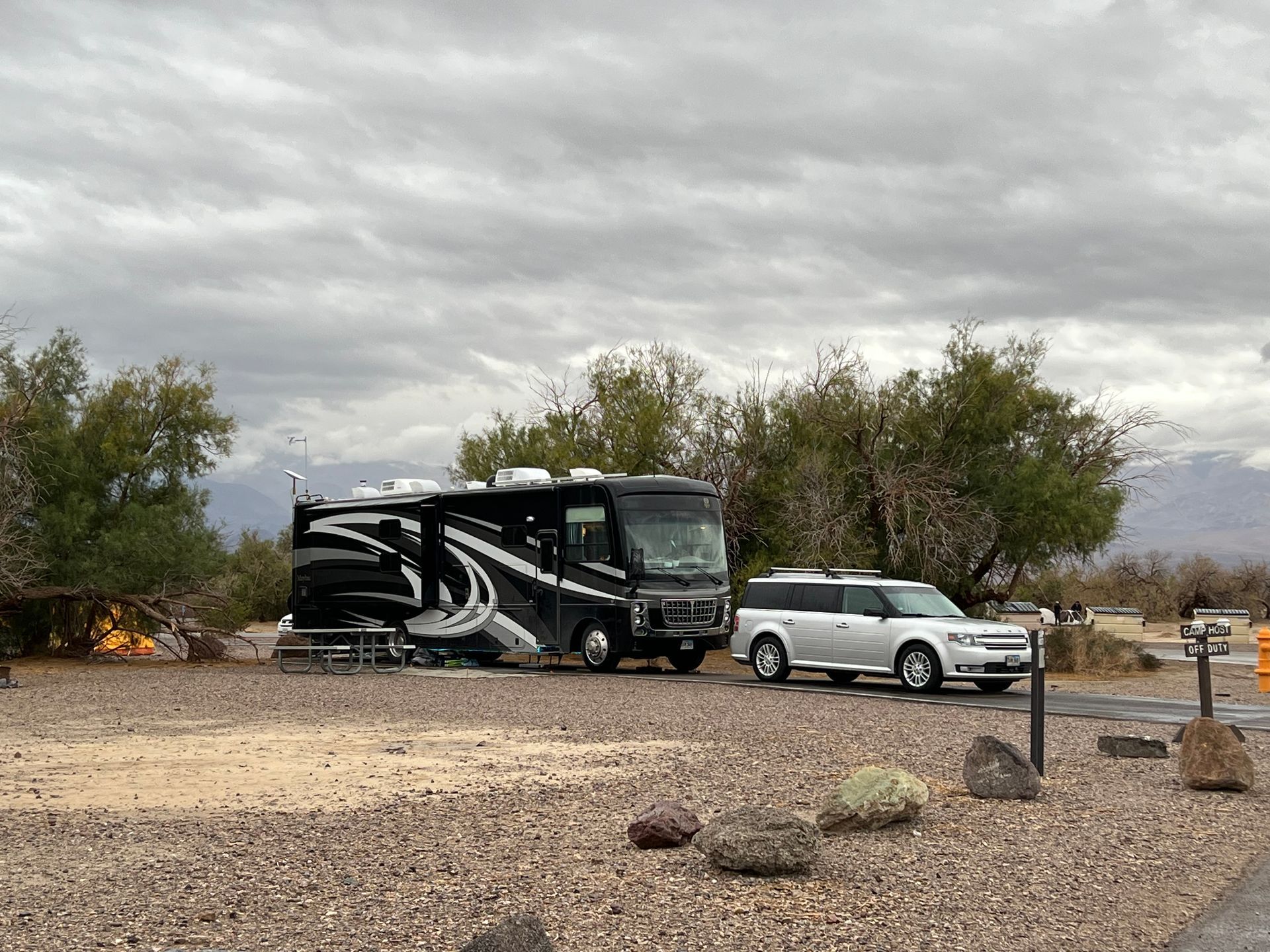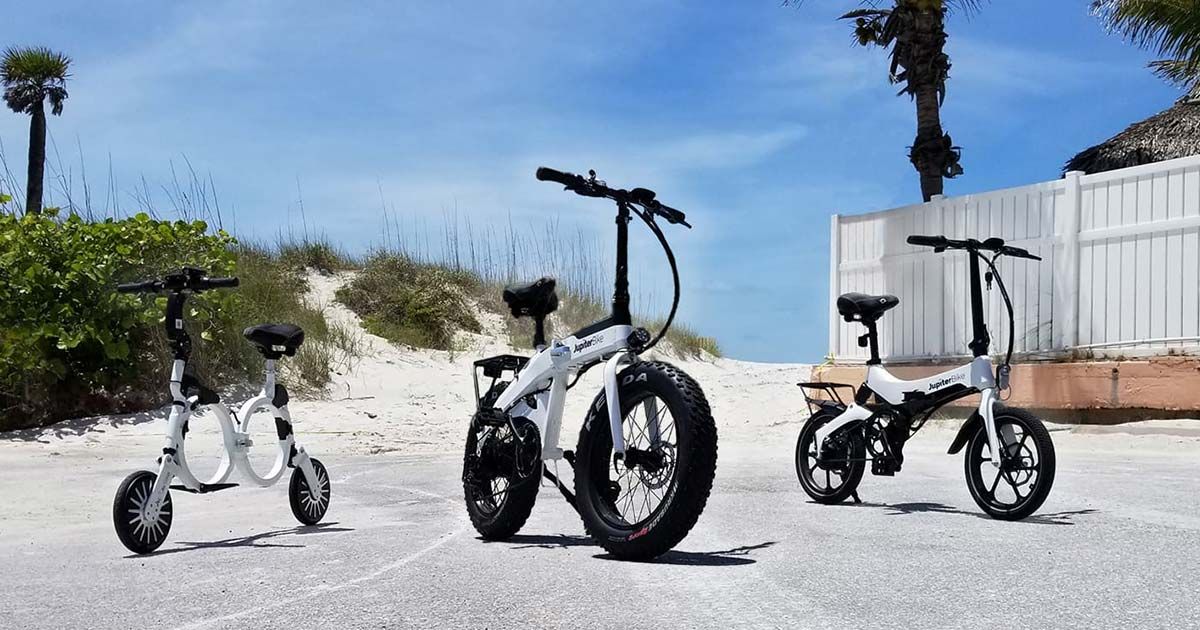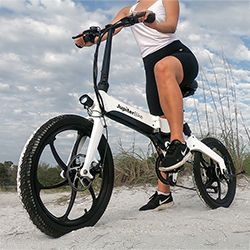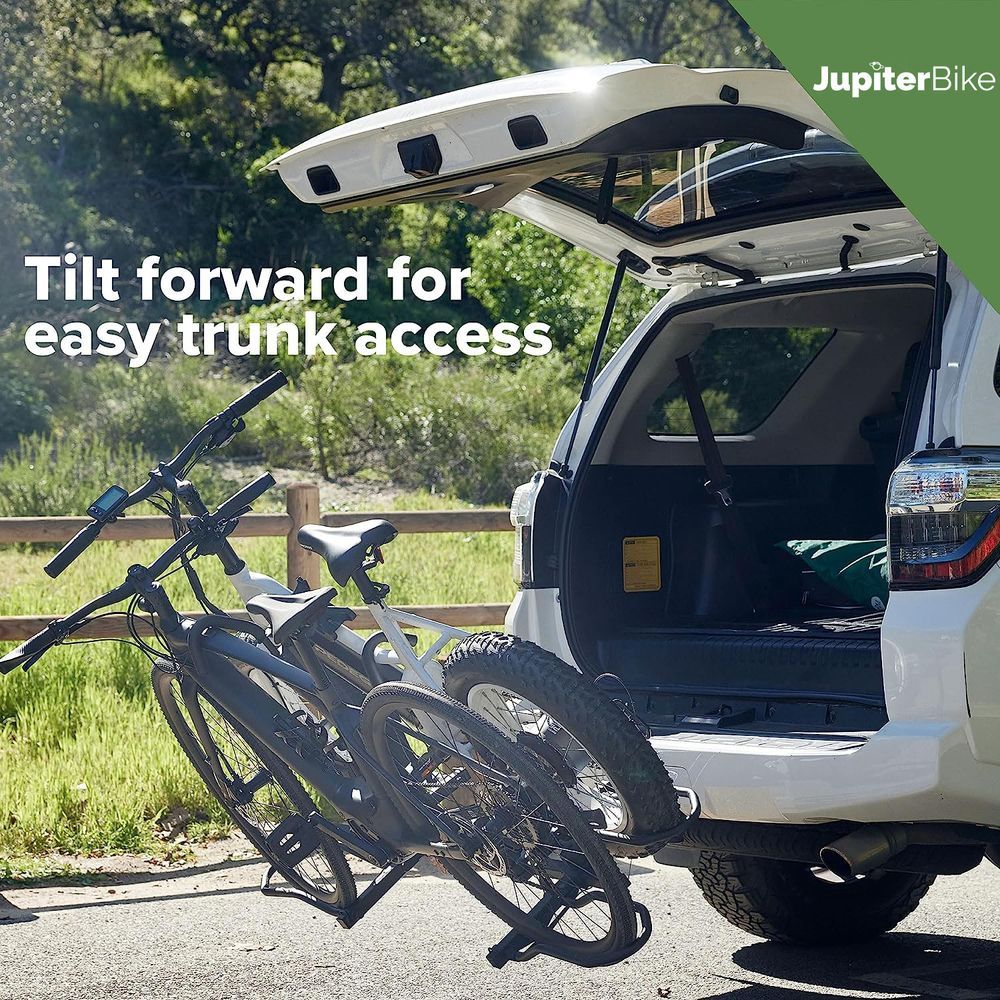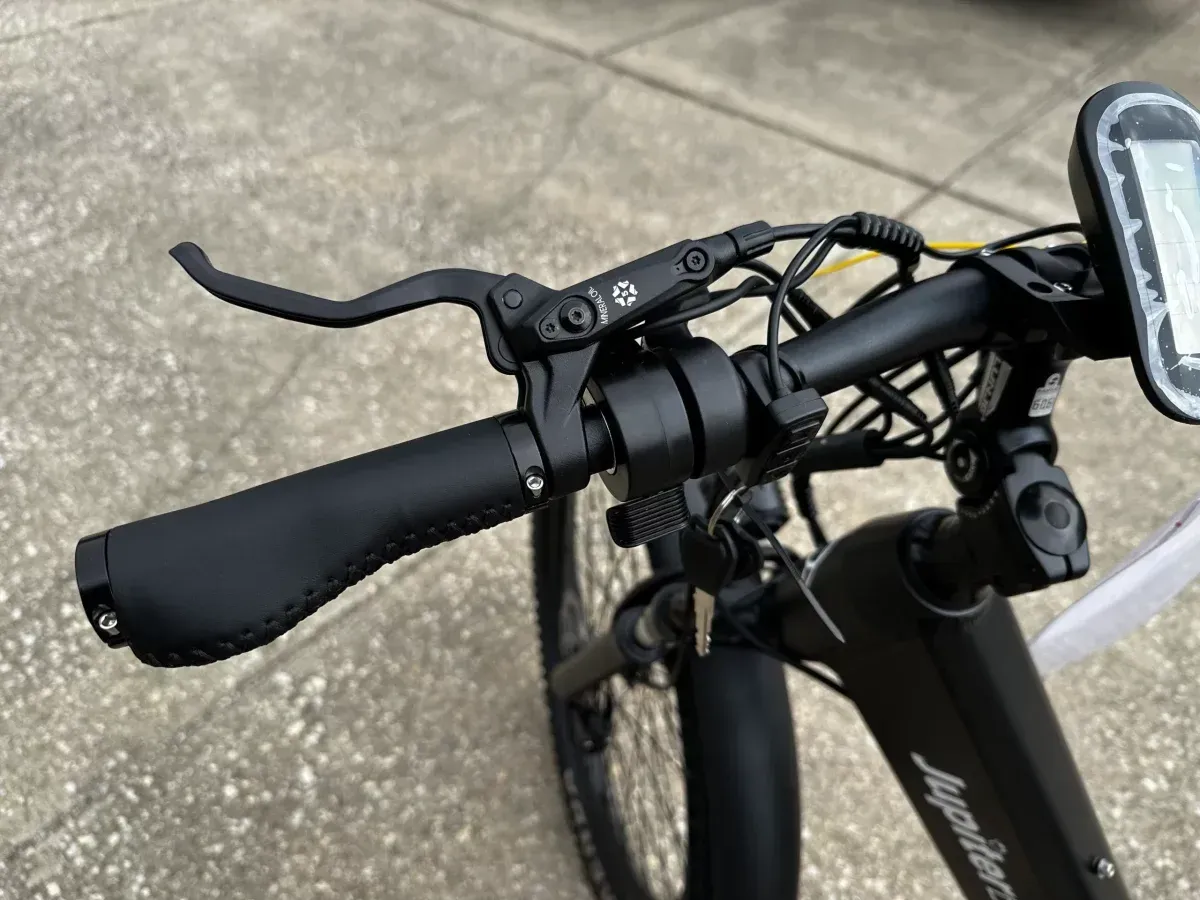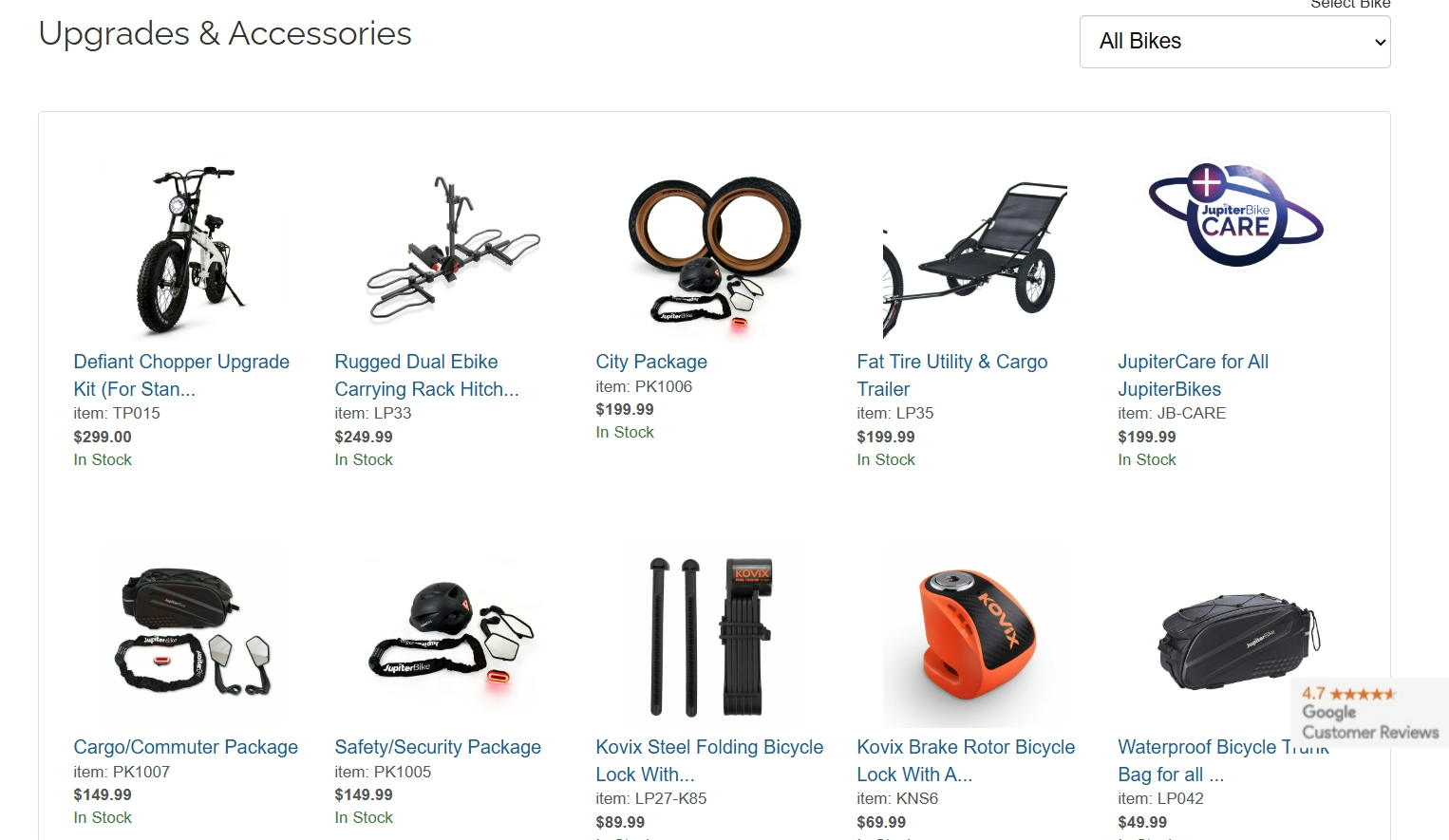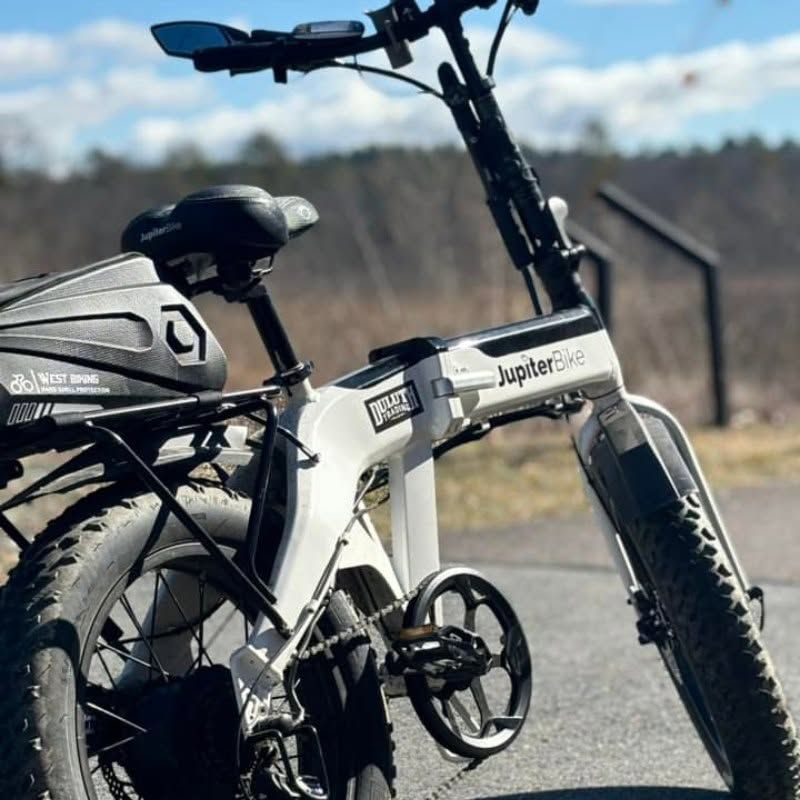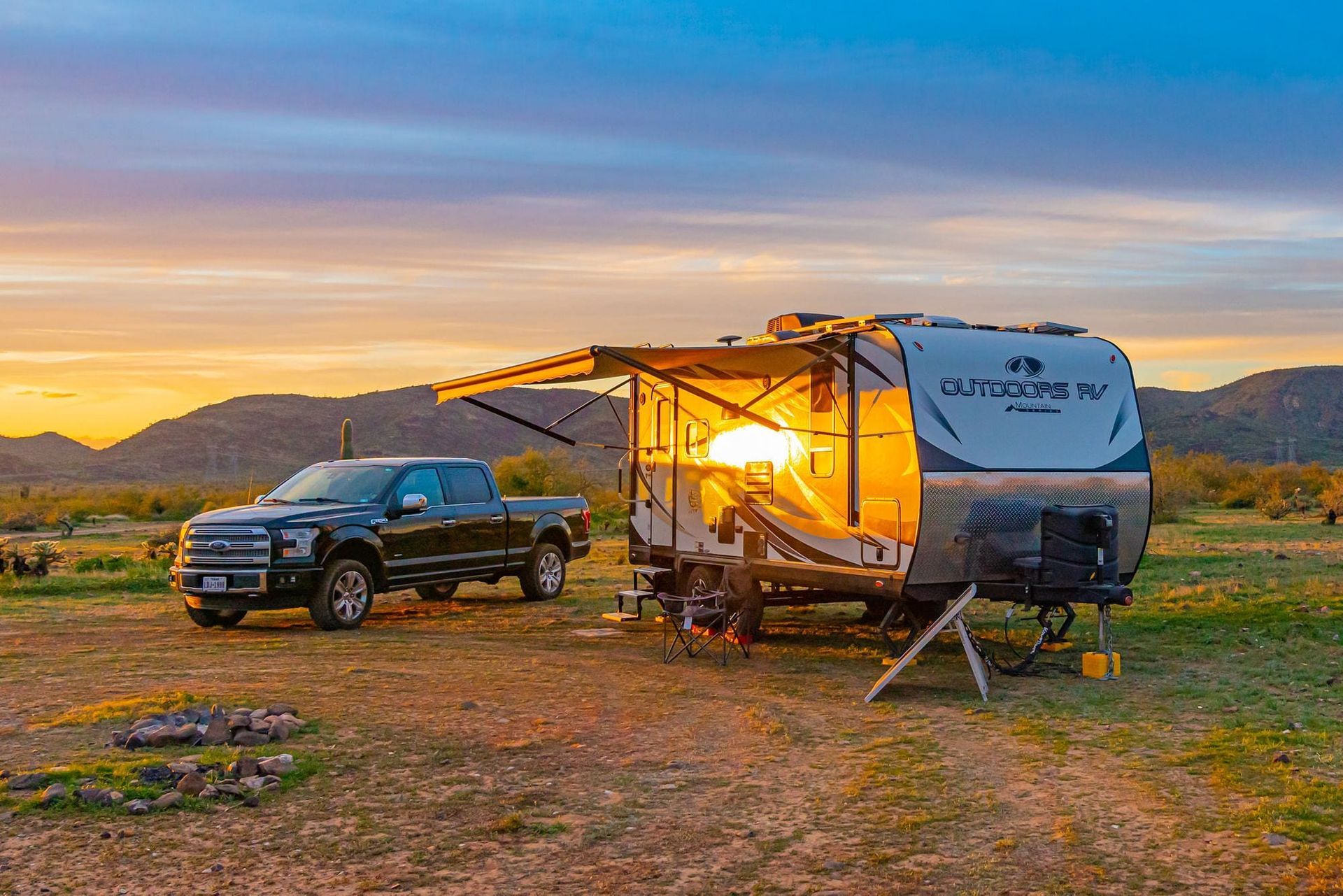Bikes in an RV: So Many Choices, So Little Cargo Space!
Jennifer Schillaci • July 17, 2025
From Campground Cruising to Off-Grid Exploring—A Bike That Travels Like You Do”
Choosing the right bike for RV life can be a dilemma, especially with options like folding e-bikes and fat-tire cruisers at your fingertips. Whether you're after a compact ride that fits snugly into your storage bay or yearning for thrilling off-road adventures on picturesque backcountry trails, there's a perfect bike for every type of traveler.
At Learn to RV, we understand that in the RV world, cargo space is precious, weight matters & mobility is key, making your biking choice essential for unforgettable journeys!
For many RVers—especially those balancing space, mobility, and adventure—Jupiter Bikes offer a smart, well-rounded solution that’s easy to love and hard to outgrow.
While Jupiter Bike certainly isn’t the only great e-bike option for RV life, it’s earned a loyal following among travelers for good reason. In this blog, we’re taking a deep dive into its features, performance, and portability so you can decide if it’s the right ride for your journey.
Jupiter Bikes stand out for RVers thanks to their smart blend of compact design, rugged performance, and travel-friendly features that make life on the road smoother and more adventurous. In addition, Jupiter Bikes are widely praised for their solid build quality, thoughtful engineering, and reliability, especially among RVers, boaters, and even urban commuters who value compact, foldable transportation.
- Ultra-Foldable & Lightweight: Models like the Discovery X5 fold down in seconds to fit in tight RV storage bays, under dinettes, or even inside a closet. At just 40 lbs, they’re easy to lift and stow.
- Removable Concealed Battery: Recharge on the go with a battery that locks securely into the frame but pops out for easy charging—ideal for RVers who rely on solar setups or campground power.
- All-Terrain Capability: The Defiant model features fat tires and a 750W motor that can tackle sand, gravel, and snow—perfect for boondocking or exploring off-grid trails.
- Low Maintenance & Durable Build: Magnesium alloy frames, disc brakes, and IP54 water resistance mean these bikes are built to handle the wear and tear of RV life.
- Comfort & Safety Features: Dual suspension seats, LED headlights, reflective tire sidewalls, and LCD displays make for a smooth, safe ride—whether you're cruising a campground or running errands in town.
- RV-Ready Accessories: Optional travel bags, cargo racks, and fenders add convenience for RVers who need gear that adapts to their lifestyle.
Jupiter Bikes are considered affordable, especially for RVers and travelers looking for compact, electric mobility without breaking the bank. Most models fall in the $800 to $1,500 range, with refurbished options starting around $899 right on their website. That price point includes features like foldable frames, lithium-ion batteries, and disc brakes, which are often found in more expensive e-bike brands.
Whether you're a weekend warrior or full-time traveler, Jupiter Bikes offer reliable, space-saving ways to explore your surroundings.
The Jupiter Bike Lineup
If you’ve been eyeing an electric bike that fits seamlessly into RV life—compact, powerful, and adventure-ready—the Jupiter Bike lineup deserves a closer look.
From sleek commuters to rugged trail conquerors, Jupiter offers a range of folding e-bikes designed to meet the needs of nomadic travelers and weekend explorers alike.Let's take a moment to explore the standout features of each model, compare specs like speed and range, and help you find the perfect match for your lifestyle on the road.
| Model | Top Speed | Max Range | Best For... |
|---|---|---|---|
| Discovery X5 | 16 mph | 30 miles | Compact storage & light trail riding |
| Discovery X7 | 20 mph | 40 miles | Everyday cruising with extra comfort |
| Defiant | 28 mph | 40 miles | Rugged terrain & off-road adventures |
| Defiant ST | 28 mph | 50 miles | Step-through access & fat tire fun |
| Defiant Pro | 32 mph | 50 miles | Premium performance & full suspension |
| Journey ST | 28 mph | 50 miles | Long-range comfort & commuter style |
| Rogue | 28 mph | 50 miles | Stylish, powerful, and trail-ready |
| Tempo | 28 mph | 40 miles | Sleek city rides & errands |
If you're trying to decide which Jupiter Bike fits your RV lifestyle best, it really comes down to how you ride, where you store it, and what kind of terrain you love to explore.
The Discovery X5 is ultra-lightweight and folds down small—perfect if you need something compact for casual campground cruising. If you want a bit more comfort and range, the Discovery X7 adds suspension and a longer battery life without taking up much more space.
For off-road adventures if you are an avid boondocker, the Defiant ST and Defiant Pro offer fat tires, powerful motors, and rugged builds—great for sand, gravel, or snow.
On the other hand, If you're looking for a stylish commuter with long-range capability, the
Journey ST and
Rogue deliver speed and comfort with sleek designs. And for city errands or paved paths, the
Tempo is a solid, affordable choice with a smooth ride and easy handling.
What to Consider When Buying:
- Storage Space: All models fold, but the Discovery X5 is the most compact.
- Terrain: Choose fat tires (Defiant ST) for sand, snow, or gravel.
- Power Needs: Higher wattage motors (750W) offer better hill-climbing and speed.
- Comfort & Accessibility: Step-through frames are ideal for easy mounting, especially for older riders or those with mobility concerns.
- Budget: Prices range from ~$1,099 to ~$1,999 depending on features and retailers.
Jupiter Bikes range in weight from approximately 37 to 70 pounds, depending on the model, and that matters a lot for RV travel. Lightweight options like the Discovery X5 (around 40 lbs) are ideal for RVers who need something easy to lift into storage bays or carry up steps, while heavier models like the Defiant Pro (closer to 70 lbs) offer more power and rugged features but require more muscle and space.
For full-time travelers, retirees, or families juggling gear and mobility needs, choosing a bike that balances weight with performance can make setup, teardown, and everyday use far more manageable. Plus, keeping your overall RV load lighter helps with fuel efficiency and reduces wear on your rig. Whether you're boondocking off-grid or cruising through campgrounds, the weight of your e-bike plays a big role in how smoothly your adventures roll.
- The Discovery X5 is one of the lightest, weighing around 37–40 lbs, making it ideal for RVers with limited storage or lifting capacity.
- Mid-range models like the Discovery X7 and Tempo weigh approximately 50–55 lbs, offering a balance of portability and comfort.
- Heavier-duty options like the Defiant ST and Defiant Pro can weigh 60–70 lbs, due to their fat tires, larger motors, and full suspension systems.
Most bikes in the lineup support riders up to 265–300 pounds, depending on the frame and motor configuration
- The Discovery X5 and X7 typically have a weight limit of 265 lbs, making them ideal for lighter riders or those prioritizing portability.
- Heavier-duty models like the Defiant ST, Defiant Pro, and Journey ST support up to 300 lbs, thanks to reinforced frames and higher torque motors.
Weight limits matter not just for safety, but also for performance—exceeding them can reduce battery efficiency, strain the motor, and affect ride stability. If you're close to the upper limit or plan to carry cargo, it's smart to choose a model with a higher capacity.
Cargo Racks, Cruiser Seats, and Chopper Kits—The Add-Ons RVers Love Most
To carry a Jupiter Bike safely and securely, you'll want a heavy-duty, hitch-mounted e-bike rack that’s built to handle the weight and dimensions of electric bikes. Jupiter offers a rugged dual e-bike rack specifically designed for their models.
- A tilt-back foot pedal for easy access to your RV or vehicle’s cargo area
- Integrated hitch lock for added security during transport
- Compatibility with fat tires up to 5.5" and wheel sizes from 17" to 29"
- A 150 lb weight capacity (75 lbs per bike), perfect for heavier models like the Defiant
- Fits standard 2" hitch receivers, commonly found on RVs, trucks, and SUVs
This rack is ideal for RVers because it’s built to endure long hauls, rough terrain, and frequent loading/unloading. If you’re traveling solo or need something more compact, I can help you explore single-bike options or folding racks that match your rig’s specs.
Many Jupiter Bike models—especially the foldable ones like the Discovery X5 and Discovery X7—are designed to fit in RV storage bays, thanks to their compact folded dimensions and lightweight frames.
For example:
- Discovery X5 folds down to approximately 30" x 15" x 21" and weighs about 40 lbs
- Discovery X7 folds to around 36" x 17" x 25" and weighs about 48 lbs
These dimensions make them ideal for most standard RV pass-through storage compartments or under-bed bays. Just be sure to measure your specific bay and account for any gear or padding you might store alongside the bike. If you’re traveling with multiple bikes or heavier models like the
Defiant Pro, interior storage or truck bed setups might be better options.
Most Jupiter Bikes come equipped with Shimano gear systems, offering smooth and reliable shifting for a variety of riding conditions. For example, the Discovery X5 features a 6-speed Shimano Tourney gear shift, which lets you maintain a comfortable pedaling cadence whether you're climbing hills or cruising flat terrain. The Discovery X7 uses a SIS-type shifter, which is intuitive and easy to operate with a thumb button and trigger-style lever.
They even have a whole lineup of accessories and upgrades to customize your ride and make it RV-life ready. Jupiter Bikes offers everything from
rear cargo racks and
waterproof handlebar bags to
extended-range batteries,
LED lights, and
suspension seat posts. You’ll also find
mirror sets,
fender kits, and
bike locks designed specifically for their models, plus comfort upgrades like
cruiser-style seats and
mesh cup holders. For serious adventurers, there’s even a
fat tire cargo trailer and a
chopper-style upgrade kit to give your bike a bold, moto-inspired look.
Tips to Protect your Investment
You need to know how to keep your Jupiter bike secure. Always start by using a sturdy U-lock or heavy-duty chain lock—cable locks are easily cut. Lock both the frame and at least one wheel to something immovable, and consider using two different types of locks to make it tougher for thieves.
Park in well-lit, high-traffic areas and avoid leaving it out overnight if you can; switching up your parking routine also helps deter targeted theft. Remove accessories like lights and phone mounts, and look into GPS trackers that alert you if your bike moves unexpectedly.
Register your bike with services like Bike Index, and take detailed photos—including the serial number—for proof of ownership. Engraving your contact info in a hidden spot adds another layer of protection. Smart locks and hidden trackers can be especially helpful when you’re on the move and parking in unfamiliar places.
REI definitely has your back when it comes to keeping your Jupiter bike safe and weatherproof. 🚲 They offer a range of gear that blends security with durability.
- Heavy-duty locks like the Litelok X1 and Hiplok D1000 are top-tier for theft prevention, with resistance to angle grinders and double-locking mechanisms.
- Smart locks and alarms, such as the WSDCAM USB Rechargeable Bike Alarm, add tech-savvy protection with motion sensors and remote alerts.
- Weather-resistant bike covers and frame protection kits help shield your bike from rain, sun, and road grime.
- Bike storage solutions, including wall mounts and indoor racks, keep your ride secure when you're parked at home or in your RV.
Riding Protected—Jupiter Bikes’ Warranty Plans
All new Jupiter Bikes come with a 2-year all-inclusive warranty that covers both the bike and the battery. This warranty protects against manufacturing defects and includes support for repairs or replacements when needed. To activate it, you’ll need to register your bike within 30 days of purchase and provide proof of purchase.
For added peace of mind, Jupiter also offers an extended protection plan called Jupiter Care, which boosts coverage to 3 years and includes accidental damage protection, rapid parts replacement, and premium customer support. It’s available for purchase within the first 45 days of owning your bike.
If you're hitting the road in your RV, Jupiter Bikes are the perfect companions for your adventures! With their compact foldability and lightweight frames, not only do they provide smooth rides and reliable battery life, but options like the Defiant Pro also tackle off-road trails with rugged performance. Jupiter Bikes are built to last and come with travel-friendly features, making them a smart investment for RVers looking to explore without the hassle.
Other blogs you might like...

